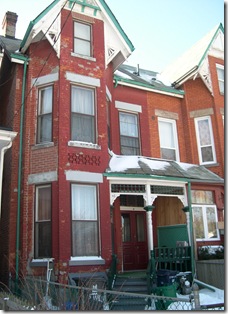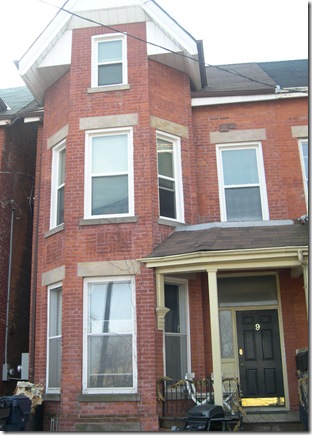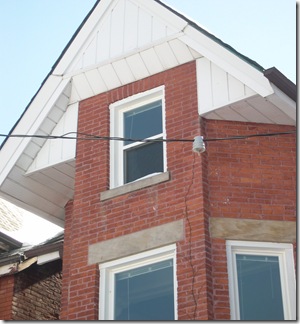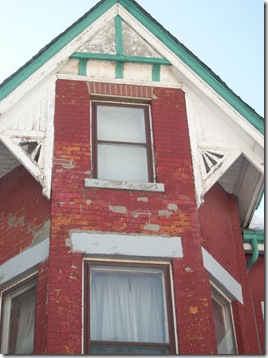Discovering the Kensington Market, a Village Within the city!
This post examines two Victorian “Bay and Gable” houses on Wales Avenue.
9 Wales Avenue
9 Wales Avenue
This fine example of a “Bay and Gable” house, a style of domestic architecture that originated in Toronto, was constructed in 1890. The style was copied by many towns and cities throughout Canada. It was popular during the latter decades of the nineteenth as it contained large bay windows that allowed generous lighting to brighten the interior, in an era without electricity. The bay windows on the first floor of 9 Wales Avenue soar upward to the peak of the gable. Hence the name, “Bay and Gable.”
When the construction of 9 Wales Avenue was completed in 1890, Simon Foster, a grocer by trade, occupied the premises. Five years later, he vacated the house as he had purchased a building at 790 College Street to open his own store. He decided to live in the apartment above the store.
Percy P. Kerwin bought 9 Wales in 1895. In 1903, John M. Mains, a professional engineer, became its occupant.
The trim around the top of the gable a 9 Wales Avenue has been modernized.
The other Victorian house on the south side of Bellevue Square that interested me was 7 Wales Avenue.
7 Wales Avenue
Similar to the other houses on the south side of Bellevue Square, 7 Wales Avenue was built in 1890. Mrs. Mary Foster, a widow, purchased the home. It would be interesting to know if she was related to Simon Foster, who moved into the house next to her in the same year. Mary was the widow of Charles P. Foster. He and his business partner owned a “fancy goods” store at 51 Yonge Street. It was likely a quite successful business, as when Charles Foster died, his widow was able to afford this large “Bay and Gable” home. The pediment (triangle) at the top of the soaring gable retains its original trim, as does the street-level porch.
 Living in a decade devoid of government support systems, it was likely necessary that Mary live a frugal lifestyle. However, the location of her home made life a little easier for her. It was an era when neighbours readily assisted each other, and she lived in a close-knit community. As well, she was within walking distance of the shops on Spadina Avenue and Queen Street West.
Living in a decade devoid of government support systems, it was likely necessary that Mary live a frugal lifestyle. However, the location of her home made life a little easier for her. It was an era when neighbours readily assisted each other, and she lived in a close-knit community. As well, she was within walking distance of the shops on Spadina Avenue and Queen Street West.
We can imagine her departing from her home each morning to shop for fresh fruits and vegetables, as well as to purchase meat or fish. Because it was an era without refrigerators, most residents of the city shopped daily to avoid food from spoiling.
It is easy to imagine guests arriving at 7 Wales Avenue, and ascending the steps to the small veranda to attend an afternoon tea hosted by Mary. Today, the veranda has a fine view of the scene across the street in Bellevue Square. Mary would likely be shocked to see the square today, and I doubt that she would have approved of the “pot party” that was held there during the great blackout of 2003. On the other hand, who knows?
The small veranda at 7 Wales Avenue
The peak of the home’s gable, with its half sun-burst trim at the lower corners
The homes I would like to share on my next post are on Augusta Avenue, on the east side of Bellevue Square.
Kensington Painting
Kensington Fruit Market, at the corner of Kensington and St. Andrew’s avenues.
Acrylic on stretched canvas, 16” by 20 “




